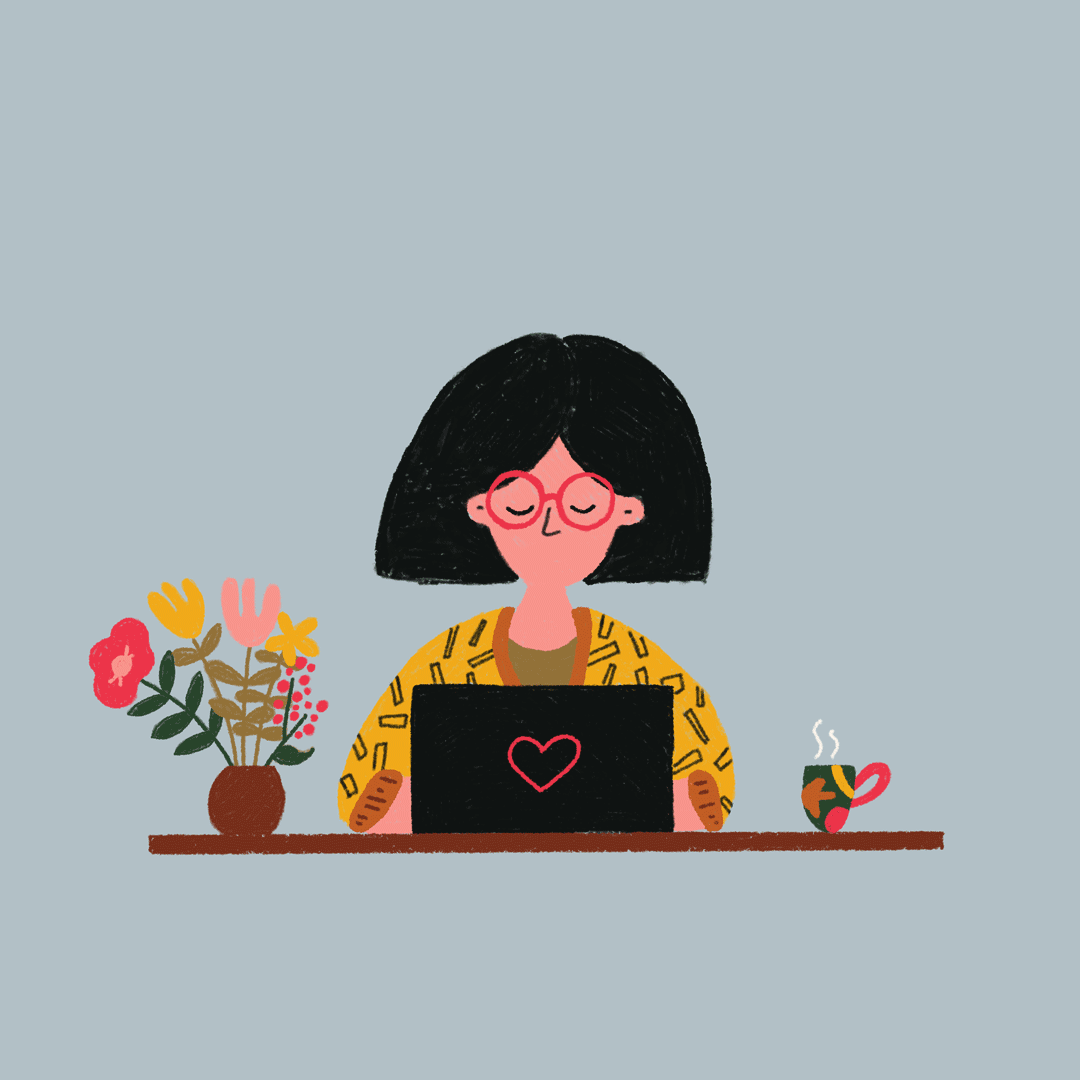Bold Branding: 4 Creative Small Business Brand Design Ideas to Inspire a Strong Identity
- Emmelie Coulson

- Oct 6, 2023
- 6 min read
Updated: Nov 17, 2024
Nothing is original
I can’t tell you how many times people say to me; “I’m just not that creative”. Which I think is a load of BS to be honest.. I believe that everyone is creative, maybe not in the way that you traditionally see creativity. Just because you think you can’t draw that well, or paint that well doesn’t mean you’re not creative!

Creativity comes in many different forms; crocheting for example or being able to make a delicious meal from the leftovers in the fridge. Or maybe you are really good at photography or coming up with funny stories. All of these are ways in which we show our creativity.

I feel that people think of being creative as coming up with original ideas.. However as Austin Kleon writes in his book Steal Like an Artist: “...nothing comes from nowhere. All creative work builds on what came before. Nothing is completely original.”
Instead of putting this pressure on ourselves to be creative or original and trying to make something out of nothing, how about looking around us and finding things worth stealing. Embracing the influence of what is already around us instead of hiding from it.
So if you are that person that thinks “I wish I was a bit more creative” go and look around you for things to steal. Find things you love and things you loathe- but don’t stop there, dig deeper. What exactly in that drawing do you love? Is it the colours? The linework? The boldness or the intricacy? Why do you hate that song so much? Is it the lyrics? The melody? The bridge? Are there things you do like in the song?
Figure out what is worth stealing and what you definitely don’t want to copy. Then figure out how you can make that your own.
Link ideas to your personality
To make an idea more your own, linking it to your personality is a great way to do this. After all there is only one YOU. If you’ve worked on your brand strategy you’ve probably already have an idea of what makes you unique- but this is an ever evolving thing so reflecting on this every once in a while isn’t a bad idea.
Looking further than just your business will also help you further in making (stolen) ideas your own, this will involve a thoughtful and introspective approach. You could start by thinking about key aspects of your personality, like values, interests and unique traits. Then start figuring out how these aspects can be turned into visual characteristics of your branding. If you love nature and gardening, look at imagery and illustrations that represent this and look for ways to incorporate this into your logo or your colour palette.
Adding your personality to your branding makes you authentic, meaning that your business is relatable and inviting.
When your audience sees your personality come through in your branding they know that they are dealing with a person that they can relate to and who understands them and they’re not dealing with yet another faceless entity. After all- people buy from people.
So now we know that to create a bold and inspiring brand design for our small business requires a combination of creativity (or stolen ideas) and strategic thinking. But how will we put this into action? Here are some ideas to inspire boldness in your brand design:
Creative ideas to inspire bold branding
Vibrant Colour Palette
One of my traits as a brand designer is that I love the use of bold colours in my designs. Having a vibrant colour palette is like infusing life into your brand’s identity. But it’s about more than just aesthetics; I will always link back to colour psychology, your brand values and creating that emotional connection with your audience.
So instead of just choosing the colours that you like, have a look into what each colour means and what emotions it evokes. Is this in line with your brand values? Look at your personality traits and which colours link to them.
In a world full of muted tones and beigeness, a vibrant colour palette is you saying HERE I AM!
It will put a smile on your audience’s face and leave an unforgettable impression.

Once you’ve decided on your colour palette, make sure that you use it consistently in all of your marketing material. Define which colours are your primary, secondary and accent colours and stick with this. Using your primary colours in things like your logo or headers. You can use your secondary colours in elements like backgrounds and accents. Accent colours would be used more sparingly for things like call-to-action buttons or highlights.
Not only does consistently using your colour palette and applying it to all your marketing materials make you more easily recognisable, it will also make you look more professional and trustworthy.
Typography with Attitude
Another way to add some boldness to your branding is to choose Typography with Attitude. Using bold typography in your brand identity will put across a sense of confidence and authority- showing the world you mean business!
When choosing bold fonts make sure to look back at your brand strategy and the message you want to put across. Fonts with strong, clean lines like sans-serif or slab-serif typefaces often give off a bold and modern feel, while serif fonts can add a touch of sophistication. Play around with different weights and styles within your chosen typeface to find the perfect balance between boldness and readability.

Choose one primary font- to be used for headers, logos and key brand messaging and a secondary font- to be used for subheadings or paragraphs. But don’t go overboard with the attitude here, balance is key! I would advise on using a bold, full-of-attitude font as your primary typography to make that strong first impression combined with a lighter or regular typography for body text to ensure readability.
By choosing and using bold typography thoughtfully, you can create a brand identity that stands out and communicates your message effectively.
Bold Patterns and Unique Textures
Patterns and textures are not always included in brand design but they can really elevate your visual identity, making it not only bold but also highly distinctive and personal. These design elements can add depth and character into your brand, setting you apart from the competition.
Going back to our brand strategy and personality traits, make sure that the patterns and textures you choose reflect your values so your messaging stays clear and consistent. When done right, they can transform your brand from ordinary to extraordinary, leaving a lasting and memorable impression.
You can create patterns not just with elements like geometric shapes or illustrations, they can also be designed with colours from your vibrant colour palette or words typed in your attitude filled fonts. Your bold patterns can be used for various branding materials, from packaging to websites and marketing collateral.
Textures, on the other hand, engage the sense of touch, creating a more immersive brand experience. Whether it's the rough texture of recycled paper in your business cards or the smooth, metallic finish on your product packaging, textures add a tactile quality that connects customers to your brand on a personal level. Think about how these textures align with your brand's values – natural and eco-friendly textures can communicate sustainability, while high-gloss textures might signify luxury.
Illustrations
As an illustrator there’s nothing more that I love than to add illustrations into a brand design project. Illustrations have a unique power to tell stories, evoke emotions, and make your brand feel approachable and relatable. Whether it's charming characters, imaginative scenes, or abstract, eye-catching designs, illustrations can breathe life into your brand's visual language.
One of the easiest ways to incorporate your personality into your branding is through bespoke illustrations.
Unlike stock photos or generic graphics, custom illustrations can be tailored to your brand’s unique character and messaging. But again it is crucial to think of how the illustrations align with your brand strategy. Whether they are bold, quirky or intricate, you need to make sure that the style of the illustrations is in line with your brand’s messaging and resonates with your audience.
You can use your illustrations across various marketing materials, from your website and social media graphics to packaging and promotional collateral. By adding bespoke visuals to your branding, you create a cohesive and memorable brand experience that not only sets you apart but also builds a more personal and relatable connection with your audience. Illustrations tell a story, and when they align with your brand narrative, they can leave a lasting impression that increases loyalty and engagement.
Conclusion
Being able to stand out from the crowd in a bold and vibrant way isn’t necessarily about being original or reinventing the wheel, but stealing ideas and linking them to your brand story, values and personality is essential.
Boldness in branding not only captures the attention of your audience but also shows the courage and creativity behind your business.
Through vibrant colour palettes, striking typography, bespoke illustrations, and other creative design elements, you can create a brand identity that stands out and tells your unique story. By daring to be different, to be you, you connect with your customers on a personal level. You invite them to be part of something unique and exciting, fostering loyalty, trust and a lasting impression.
In the world of small business, where every impression counts and customers want to connect with a real person, let go of the beige and the average and embrace your bold, vibrant and quirky personality!

























Comments